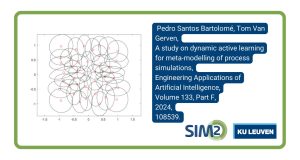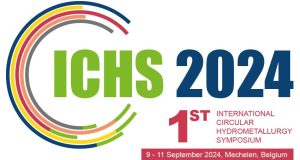A new tool allows researchers to manipulate molecules in three dimensions, recalling physical models used to visualize forests of atoms in the past.
There was a time when biochemists had a lot in common with sculptors. Scientists who had devoted their lives to studying a molecule would building a model, using metal and a forest of rods to hold up the structure of thousands of atoms. “Slow work, but at the end you really know the molecule,” said Michael Levitt, who shared the Nobel Prize in Chemistry in 2013.
These days simulations on screens have replaced such models, sacrificing some of their tactile value while gaining the ability to show movement. But what if you could enter a virtual reality environment where the molecules lie before you, obeying all the laws of molecular physics as calculated by supercomputers, and move them around in three dimensions?
Helen Deeks and Matt Sutton/Interactive Scientific Ltd.
In a new paper in the journal Science Advances, researchers report that they have constructed just such an environment, and that users who manipulate the proteins in VR can perform simple tasks nearly ten times faster in virtual reality than on a screen.
Intuition about how molecules behave physically remains a very important skill in chemistry and biology and their practical applications. Where a molecule might bend, where it won’t and just how the positive and negative charges it is riddled with attract and repel each other, are all key to understanding how a drug will slip into a cleft in a protein, among other puzzles.
In the virtual world, users are experiencing the cutting of edge of what scientists know about how molecules move and flex, said David Glowacki, a researcher in chemistry and computer science at the University of Bristol in England who is a co-author of the paper. The simulation, which anyone with a virtual reality setup can access, is being run on Oracle supercomputers, with a grant from the company.
“When you reach out and touch these molecular strings, you are touching the absolute real physics,” Dr. Glowacki said. “The way that it moves and behaves is to the best of our knowledge the real deal.”
Helen Deeks and Matt Sutton/Interactive Scientific Ltd.
The researchers asked users to perform three separate manipulations of molecules and timed how long each took. They had to thread a molecule of methane through a simulated carbon nanotube; unwind a helical molecule and wind it up in the opposite direction; and tie a knot in a simulated protein. They also did the same tasks on computers using a touchscreen or a mouse. Each task resembles research that is current in biology and chemistry.
In tallying the time each task took, the researchers found that in VR, threading the nanotube and tying the knot went much quicker. The knot task, in particular, was completed nearly ten times as rapidly. By using 2D screen-based simulations of molecules, said Dr. Glowacki, “we might actually be doing things a lot slower than we could be.” Scientists who use VR to get familiar with molecules may be able to gain intuition about their movements more quickly.
The task with the helical molecule took about the same amount of time in both environments, however. Dr. Glowacki suggested that this is because the solution — grasping one end and moving it a flat spiral — is essentially a two-dimensional movement.
Helen Deeks and Matt Sutton/Interactive Scientific Ltd.
In addition to making it faster and easier to solve three-dimensional problems at the molecular level, the virtual reality tool could allow researchers at pharmaceutical companies and universities who are far apart to look at molecules together at the same time, Dr. Glowacki said.
“We’ve already started a few pilots with a few different chemical companies, also some pharma companies,” he said, “where they’re piloting it in their research labs and looking at how their scientists use it.”






